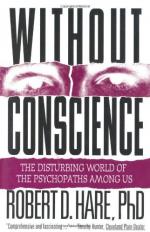
|
| Name: _________________________ | Period: ___________________ |
This quiz consists of 5 multiple choice and 5 short answer questions through Chapter 5, Internal Controls: The Missing Peice, pg 71-82.
Multiple Choice Questions
1. How did Ray trap the author by showing him a knife?
(a) Ray made the author a conspirator in his stabbing.
(b) Ray established that the author would not turn him in.
(c) Ray coerced the author into pleading his case.
(d) Ray forced the author to obey him.
2. What programs administer treatment if the psychopath is judged to be crazy?
(a) Research hospitals.
(b) Mental health facilities.
(c) Universities.
(d) Correctional facilities.
3. Why was the kitchen an inappropriate placement for Ray?
(a) He had access to the ingredients to make alcohol.
(b) He had access to knives.
(c) He had access to poisons.
(d) He could steal silverware.
4. How do psychopaths tend to feel about the future?
(a) They look forward to better days.
(b) They give it little thought.
(c) They live in an imagined future.
(d) They plan constantly.
5. How do the criminal activities of psychopaths compare with those of other criminals?
(a) Psychopaths' crimes are more specialized.
(b) Psychopaths' crimes are harder to detect.
(c) Psychopaths' crimes are more varied and frequent.
(d) Psychopaths' crimes are more violent.
Short Answer Questions
1. What need is sometimes satisfied for the psychopath by taking drugs?
2. What did John Wayne Gacy say about his career murdering thirty-three people?
3. What does the author advise readers not to do with his book?
4. What is socialization?
5. What psychopath does the author claim commanded a nation?
|
This section contains 295 words (approx. 1 page at 300 words per page) |

|




